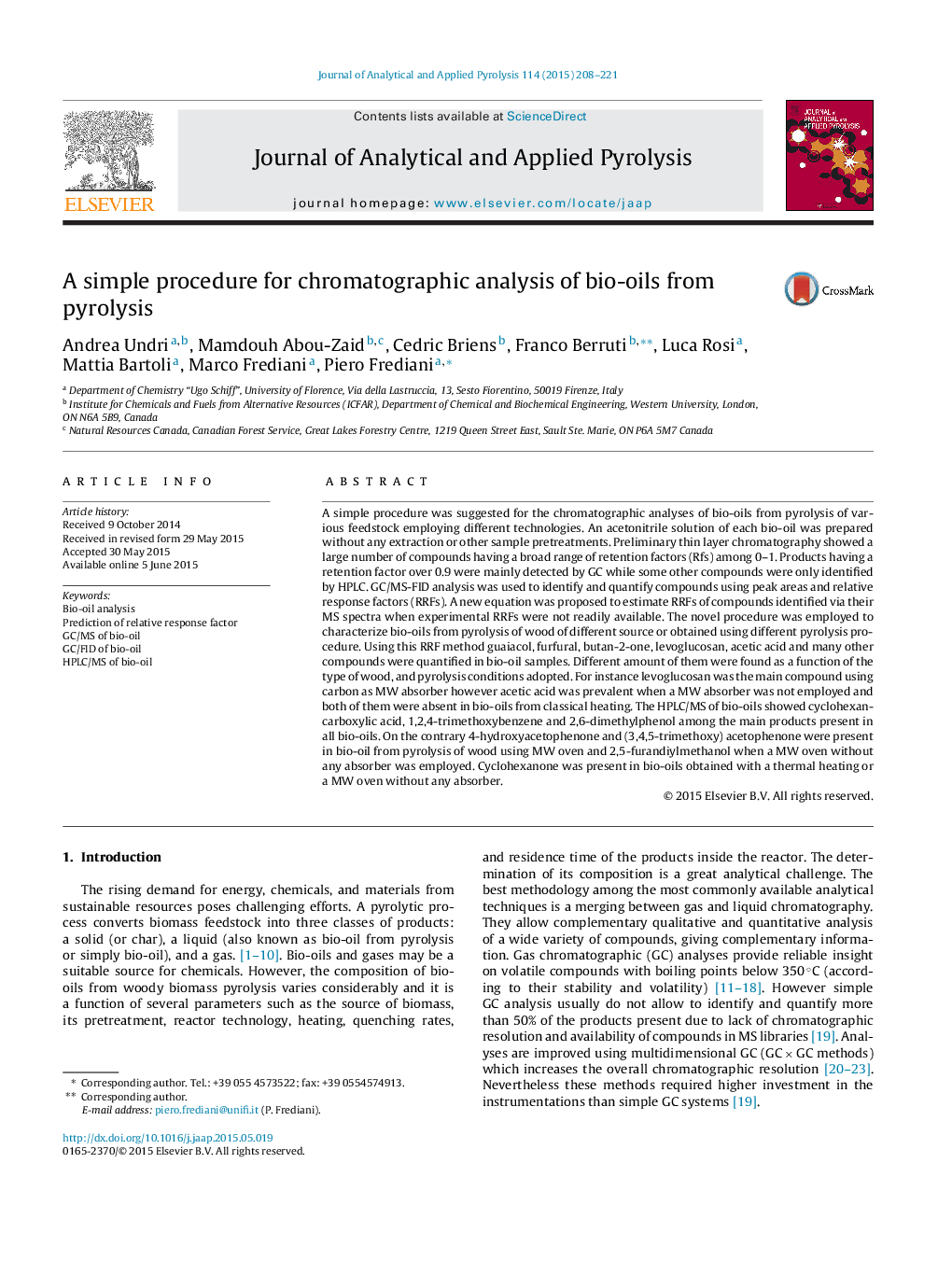| Article ID | Journal | Published Year | Pages | File Type |
|---|---|---|---|---|
| 1196981 | Journal of Analytical and Applied Pyrolysis | 2015 | 14 Pages |
•A simple procedure for analysis of bio-oil is proposed.•A new way to estimate relative response factors is suggested.•Bio-oil was analyzed by GC/MS or GC/FID.•Bio-oil was analyzed by HPLC/MS.•Composition of bio-oils from thermal or microwave pyrolysis of wood.
A simple procedure was suggested for the chromatographic analyses of bio-oils from pyrolysis of various feedstock employing different technologies. An acetonitrile solution of each bio-oil was prepared without any extraction or other sample pretreatments. Preliminary thin layer chromatography showed a large number of compounds having a broad range of retention factors (Rfs) among 0–1. Products having a retention factor over 0.9 were mainly detected by GC while some other compounds were only identified by HPLC. GC/MS-FID analysis was used to identify and quantify compounds using peak areas and relative response factors (RRFs). A new equation was proposed to estimate RRFs of compounds identified via their MS spectra when experimental RRFs were not readily available. The novel procedure was employed to characterize bio-oils from pyrolysis of wood of different source or obtained using different pyrolysis procedure. Using this RRF method guaiacol, furfural, butan-2-one, levoglucosan, acetic acid and many other compounds were quantified in bio-oil samples. Different amount of them were found as a function of the type of wood, and pyrolysis conditions adopted. For instance levoglucosan was the main compound using carbon as MW absorber however acetic acid was prevalent when a MW absorber was not employed and both of them were absent in bio-oils from classical heating. The HPLC/MS of bio-oils showed cyclohexancarboxylic acid, 1,2,4-trimethoxybenzene and 2,6-dimethylphenol among the main products present in all bio-oils. On the contrary 4-hydroxyacetophenone and (3,4,5-trimethoxy) acetophenone were present in bio-oil from pyrolysis of wood using MW oven and 2,5-furandiylmethanol when a MW oven without any absorber was employed. Cyclohexanone was present in bio-oils obtained with a thermal heating or a MW oven without any absorber.
